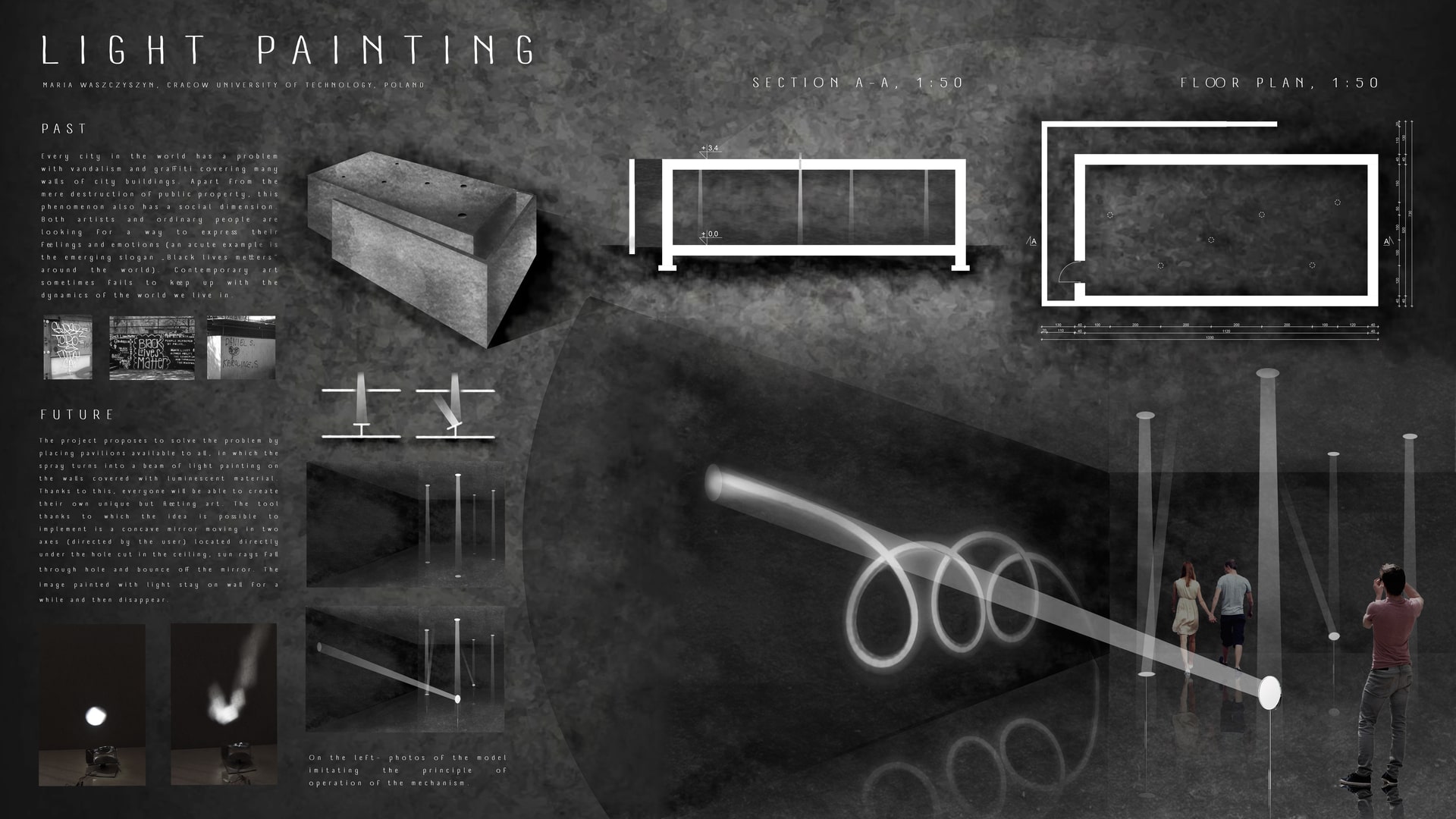Project Description
LIGHT PAINTING Every city in the world has a problem with vandalism and graffiti covering many walls of city buildings. Apart from the mere destruction of public property, this phenomenon also has a social dimension. Both artists and ordinary people are looking for a way to express their feelings and emotions (an acute example is the emerging slogan „Black lives metters" around the world). Contemporary art sometimes fails to keep up with the dynamics of the world we live in. The project proposes to solve the problem by placing pavilions available to all, in which the spray turns into a beam of light painting on the walls covered with photosensitive material. Thanks to this, everyone will be able to create their own unique but fleeting art. Walls covered with special material make the image painted with light stay on it and then disappear. The world is undergoing dynamic changes, and people need to express their emotions that change quickly, and current art sometimes is not keeping up. Concave mirror focuses rays, making it possible to paint it more precisely. The artist can create any designs using mirrors that can be moved in two axes, so that the ray can be freely guided by the user. The pavilion itself, completely dark and soundproof, makes you distant from the surrounding world, you only interact with the light passing through 10 cm diameter holes cut in the ceiling. Pairs of 'painting" stands are placed at different distances from the walls, thanks to which the reflected rays falling on them will have different thicknesses. Each image created in this way will be unique. Even several people can paint at the same time. In order to examine whether such a mechanism works properly, I have built a model controlled by the code (pattern I used was just simply mathematical function) and can draw on the plane when the light beam from the flashlight is directed at it from above. The next problem to be solved was to find a suitable material that would become a canvas for the image being created. It's enough to cover the wall with luminescent „self-lighting" pigment. This powder glows in the dark after previous exposure (not to be confused with fluorescence, which only glows when the light beam is directed - it will not stay longer) absorbs the rays of any kind of light. This effect is best seen in a dark environment. The same pigment is applied to e. g. signs to inform about the emergency services of the evacuation. How long has it been on? Under laboratory conditions even above 3500 minutes (Generation 1 pigment) - this depends on the amount of pigment per m2 and the ambient temperature. The more times we repeat a given pattern, the longer it will remain visible - but will disappear at some point. At room temperature, without repeating the pattern, the image should remain visible for about an hour or two and then slowly desapeard. In today's world it is important to be able to express your feelings. Virus pandemic, and other things have caused people to look for ways to vent quarantined emotions and feelings. Sunlight can heal, makes a person feel better, sun baths are used as therapies, so why not make it also a way of expressing yourself? Everything around us can be an art, beauty can calms down, which is why this kind of pavilion could be both - ordinary entertainment and therapy. The transience of the image may remind you to focus on the present, not just the past and future.
